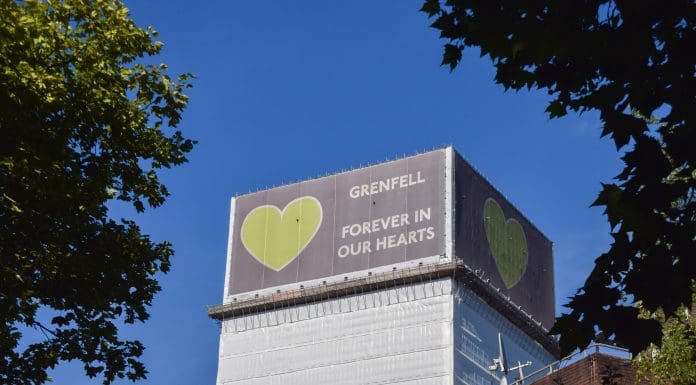On the seventh anniversary of the Grenfell Tower fire, Quelfire looks back at the changes brought about in the built environment as a result of the tragedy- and looks to the future
June 14th marks the seventh anniversary of the Grenfell Tower fire. In past years, we have focussed on themes such as the importance of responsibility and cultural change within the construction industry, encouraging all parties to be one step ahead of government initiatives.
While there are undoubtedly still challenges within the built environment, many positive changes are taking place. This anniversary article will highlight these improvements, exploring how the industry has evolved since the night of June 14th, 2017.
Hackitt’s Independent Review of Building Regulations and Fire Safety
Unsurprisingly, the Grenfell Tower fire revealed the urgent need for change within the UK’s government and construction industry. Decades of errors and misjudgements had neglected the importance of fire safety measures, endangering residents and properties.
In May 2018, Dame Judith Hackitt’s Independent Review of Building Regulations and Fire Safety found that the high-rise and complex building regulatory system was “not fit for purpose.”
This led to 53 recommendations aimed at changing industry practices to create safer living spaces for residents, which in turn led to the Building Safety Act 2022.
What changes are happening as a result of Grenfell?
Training and education
The Grenfell Tower Inquiry revealed significant gaps in knowledge, regulations, and practice, prompting the increase of fire safety training across the industry.
It is becoming more apparent that companies are now investing in internal training programmes to ensure that all employees, from on-site workers to senior management, understand fire safety measures and products. This is through attending courses, CPD sessions, or toolbox talk training.
The industry is moving beyond the traditional lunch-and-learn training style and proactively seeking educational resources for its teams.
Further, professional bodies such as the Royal Institute of British Architects (RIBA) and the Institution of Fire Engineers (IFE) have expanded their training programmes. The IFE and the Association for Specialist Fire Protection (ASFP) released Level 2 and Level 3 qualifications, covering essential knowledge for those working in the passive fire protection sector.
This works alongside other accreditation schemes to ensure all individuals involved in fire safety roles are qualified and competent. For example, the government has supported initiatives like the Building a Safer Future (BSF) Charter.
This charter was created to promote behavioural and cultural change across the industry. While it began by focussing on high-rise buildings, it has now extended its scope to cover buildings of all heights and construction activities.
Finally, the use of technology in fire safety training has increased, with virtual reality (VR) tools providing individuals with an in-depth understanding of firestopping and its function in a fire scenario.
Industry concepts
With improved education comes the adoption of industry best practices and concepts.
One prime example is the implementation of early engagement in firestopping. Traditionally, service penetration sealing was considered far too late in a construction project. However, many contractors are now putting fire safety at the forefront of their projects.
This is by engaging early with key stakeholders to ensure the installation of firestopping products are in line with the tested details and manufacturers’ guidance. This collaborative approach—from design to installation—ensures ultimate building compliance and adherence to regulations.
In a recent poll, we asked our customers whether they had begun adopting an early engagement approach. The poll revealed that 74% of respondents had, highlighting the industry’s commitment to enhancing building safety across the UK.
Ethics and responsibility
Post-Grenfell, the Building Safety Act has pushed the construction industry towards greater responsibility and ethical behaviour.
Tighter building regulations have placed clear responsibilities on individuals, for instance:
The Building Safety Regulator now oversees the safety and performance of high-rise buildings.
Dutyholders (responsible for any aspects of a project or building) and Accountable Persons (responsible for the safety of the building) must maintain the Golden Thread of Information. This ensures that accurate and up-to-date information about the building is available throughout its lifecycle.
Industry professionals must ensure they meet the requirements of Gateways Two and Three at critical stages of design and construction. This ensures work carried out has been completed compliantly.
Building owners and managers must regularly inspect active fire systems such as fire doors and sprinklers.
They should also engage with residents about fire safety and create clear instructions about what to do in the event of a fire.
Finally, not adhering to industry regulations will result in more criminal charges, including fines or, in more severe cases, prison sentences.
Learn more about the Building Safety Act here.
Looking to the future
Although the industry’s progress is somewhat driven by government legislation, it also highlights a cultural shift and desire to prioritise fire safety. The Grenfell United group, formed to drive justice for the 72 lives lost, has been influential in driving this change.
While it is shocking to know that the Grenfell Tower fire could have been avoided, the change we are seeing today pays homage to the lives lost and the wider community affected by this tragedy.
It is crucial to acknowledge the industry’s efforts and the positive changes that have been implemented. Many commendable companies, organisations, and individuals are working together, sharing a common goal of making buildings safer.
So – has anything changed?
Plenty, but we must not stop here.
The post Seven years on from Grenfell – has anything changed? appeared first on Planning, Building & Construction Today.


